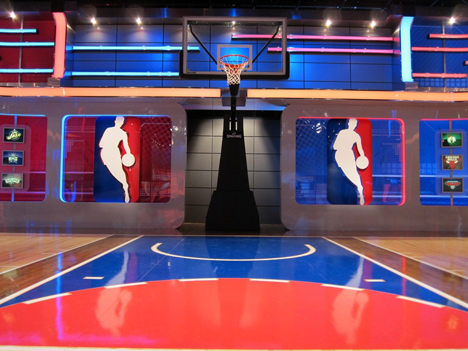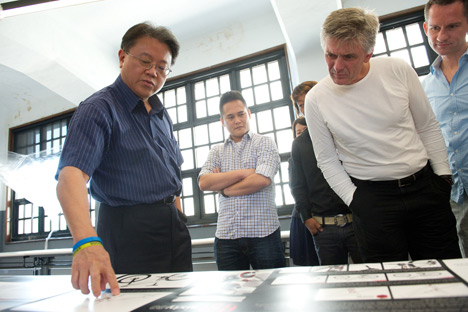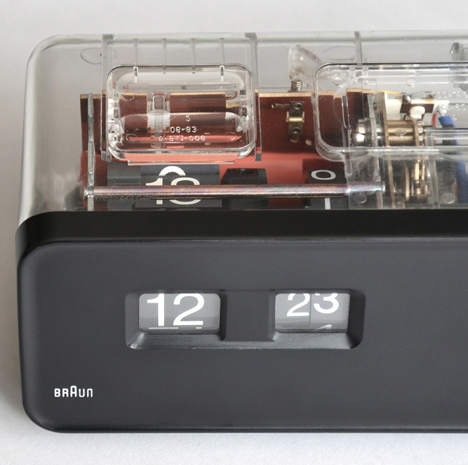A Sponsored Post on the History of Braun Design
![braun-clock-01TOPHERO.jpg]()
Every student of industrial design ought study Braun's line of timepieces. The sheer variety and innovation, on both the design and technical fronts, that the company was able to inject into something as simple as a time-telling device is staggering; Braun was obsessing over minute bevels and visual clarity years before smartphone manufacturers sought to differentiate one glass rectangle from another. The ability to so resoundingly distinguish a small circle on your wrist from other offerings on the marketplace is a testament to Braun's unrivaled championing of industrial design. Many of the objects they created have a quality of inevitableness to them, as if they had chipped away at all distractions and arrived at a universally perfect product, with nothing anyone could possibly add--or subtract--to improve them. Yet they continually updated their offerings for more than two decades, with a deep product line-up that would keep many a design curator busy.
On the subject of curation: The fact that every industrial design student does not study Braun's timepieces is probably because no one has compiled a comprehensive record of all of them. While we attempt to address that here, there are many models that we missed for want of images or information. The line is simply too large, the rare models too elusive. But we hope this will provide you with some sense of the deep mark that Braun made on what was formerly a staid product category.
![braun-clock-02PHASE1.jpg]()
![braun-clock-03phase1-2.jpg]() Image courtesy of Das Programm, specialist sellers of Braun Design, 1955–1995
Image courtesy of Das Programm, specialist sellers of Braun Design, 1955–1995
1971
phase 1
Dieter Rams, Dietrich Lubs
Braun's first clock was the relatively primitive phase 1. Clearly a first effort, it gave no hint as to the breadth of design variety to come. It featured numbers printed on little plaques attached to a mechanical rotating mechanism. That being the case, the body was large while the numbers were small; a trade-off the designers would not be willing to live with for long.
![braun-clock-04PHASE2.jpg]() Image courtesy of Sammlung Design
Image courtesy of Sammlung Design
1972
phase 2
Dietrich Lubs
By 1972 they had switched over to a flip-clock mechanism, whose tighter mechanicals enabled a smaller form and a larger display. In the phase 2 we see the design team gaining mastery over the technology in order to improve the user experience. But they were not done yet; this form factor was still driven by its mechanical innards, which they would soon discard altogether. Cutting-edge technology was in the works for what would be their radical release of 1975.
![braun-clock-05PHASE3.jpg]() Image courtesy of Sammlung Design
Image courtesy of Sammlung Design
1972
phase 3
Dietrich Lubs
At the same time they put the phase 2 on the market, Braun also dipped into the analog clock pool, releasing this compact phase 3 alarm clock. It bears virtually nothing in common with the phase 1 and phase 2, despite being released at nearly the same time; but it illustrates the design team's freedom to experiment, a characteristic Braun quality that would pay off time and again. The analog form factor would evolve into objects that collectors would treasure.
![braun-clock-06FUNCTIONAL.jpg]() Image courtesy of Das Programm, specialist sellers of Braun Design, 1955–1995
Image courtesy of Das Programm, specialist sellers of Braun Design, 1955–1995
1975
functional
Dietrich Lubs
By 1975 Braun's gorgeous functional was ready to go. As the mechanicals were now supplanted by eletronics, it no longer featured bulky innards that needed to be stuffed into a box; Dietrich Lubs took full advantage of this, creating a clock comprised of two slim, intersecting components. The rear, horizontal portion houses the circuit boards and supports the buttons (which were raised, so they could be located in the dark). The front portion held the gas discharge display, which was angled upwards for easy legibility.
Also note the self-restraint: The sleek, black display with its slick red numbers would have looked cluttered with the white Braun logo, so instead the logo was moved behind the screen, to the top of the unit.
(more...)![]()
![]()
 Photos courtesy of Ines Brunn
Photos courtesy of Ines Brunn









 Photo of Spin ceramics via
Photo of Spin ceramics via 


















 Judges Michael Tseng (Merida Bikes) & Martin Kessler (Process Group)
Judges Michael Tseng (Merida Bikes) & Martin Kessler (Process Group)






 Image courtesy of
Image courtesy of  Image courtesy of
Image courtesy of  Image courtesy of
Image courtesy of  Image courtesy of
Image courtesy of 


 Image courtesy of
Image courtesy of  Image courtesy of
Image courtesy of  Image courtesy of
Image courtesy of  Image courtesy of
Image courtesy of 






























